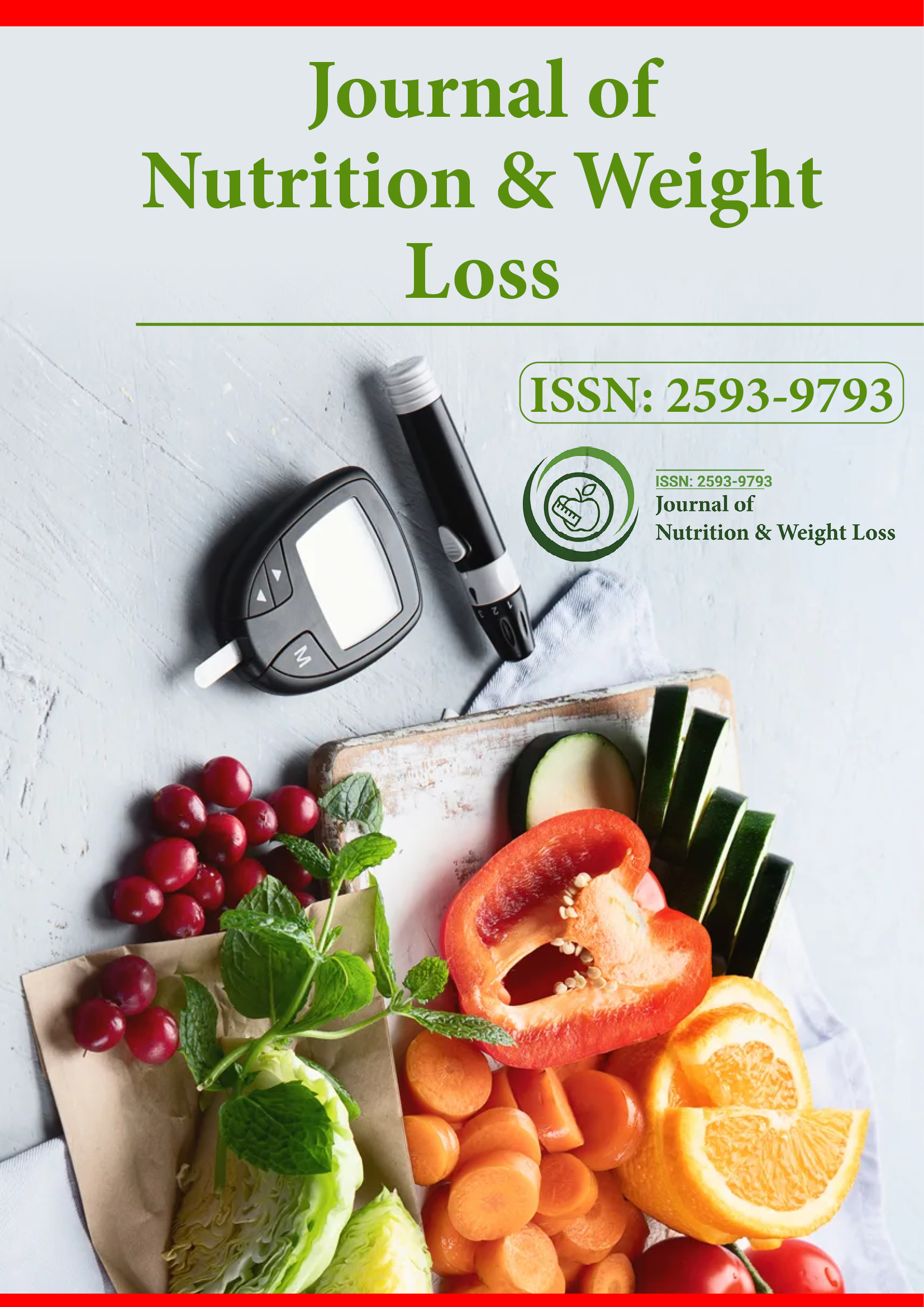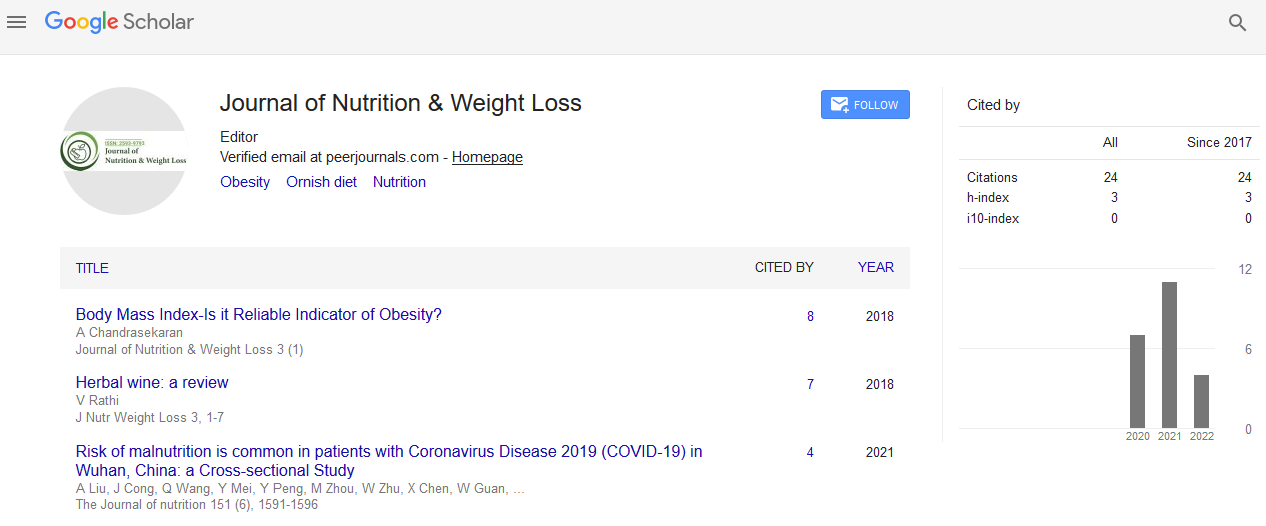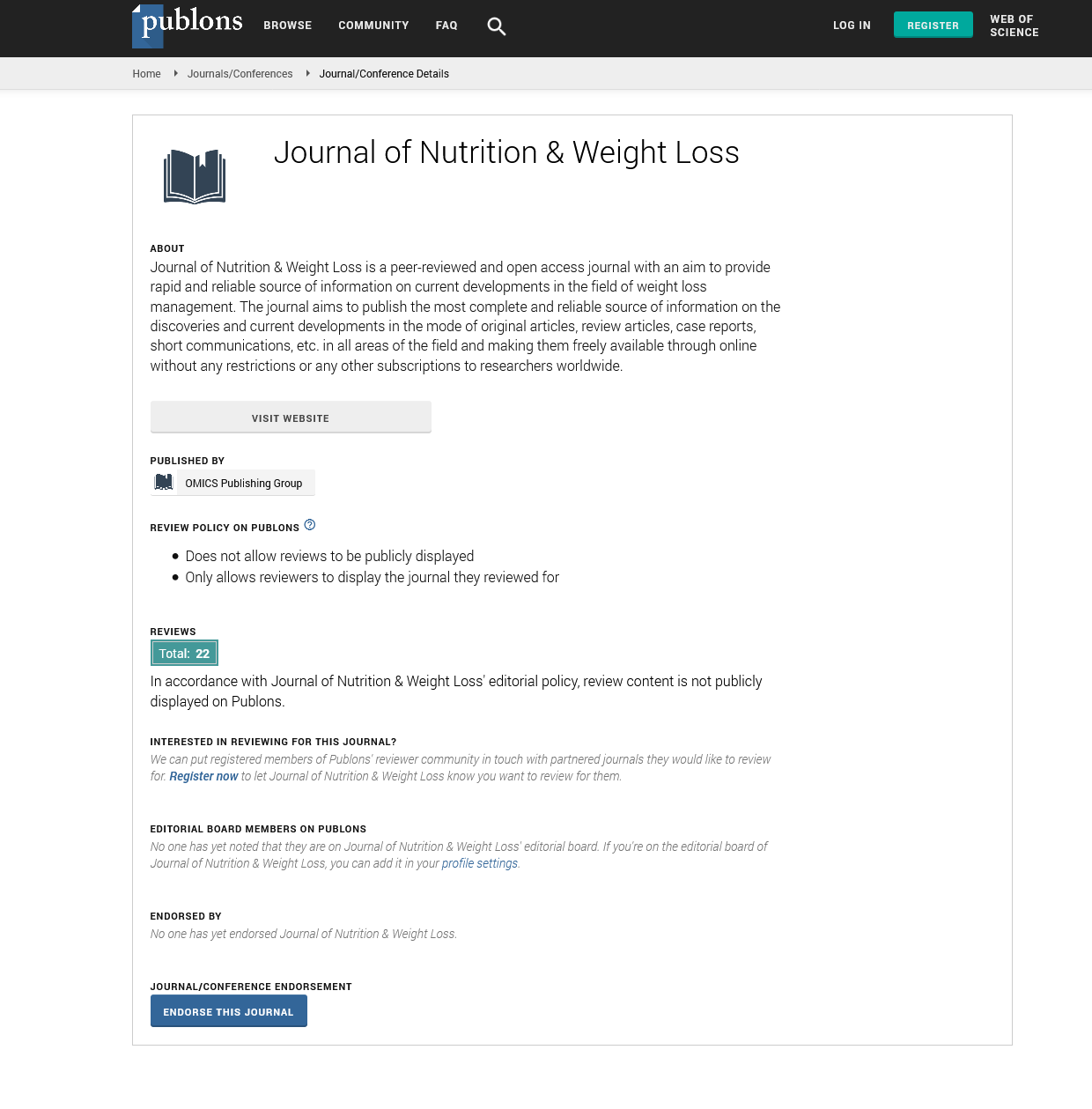Indexed In
- RefSeek
- Hamdard University
- EBSCO A-Z
- Publons
- Euro Pub
- Google Scholar
Useful Links
Share This Page
Journal Flyer

Open Access Journals
- Agri and Aquaculture
- Biochemistry
- Bioinformatics & Systems Biology
- Business & Management
- Chemistry
- Clinical Sciences
- Engineering
- Food & Nutrition
- General Science
- Genetics & Molecular Biology
- Immunology & Microbiology
- Medical Sciences
- Neuroscience & Psychology
- Nursing & Health Care
- Pharmaceutical Sciences
Opinion - (2023) Volume 8, Issue 1
Obesity and Sleep: Complex Relationship Involving Physical Activity
Huang Zhongqiu*Received: 21-Feb-0223, Manuscript No. JNWL-23-20963; Editor assigned: 24-Feb-2023, Pre QC No. JNWL-23-20963(PQ); Reviewed: 14-Mar-2023, QC No. JNWL-23-20963; Revised: 21-Mar-2023, Manuscript No. JNWL-23-20963(R); Published: 28-Mar-2023, DOI: 10.35248/2593-9793.23.8.161
Description
As comparison to individuals of normal weight, obese patients have significantly longer periods of time awake after sleep begins, longer periods of time awake overall, lower percentages of nighttime sleep, and more daytime sleepiness. Shorter self-reported sleep duration has also been associated with overweight/obesity and high BMI (Body Mass Index), but the measurement was thought to be more of an indicator of emotional stress than actual sleep loss. That is, emotional stress and affective discomfort, which can both have an impact on sleep, tend to cooccur with obesity and sleep impairment. In particular, shorter sleep duration and poorer sleep quality are linked to depression and anxiety, and depression and insomnia are linked in both directions, at least when studies on subjective sleep quality are taken into consideration.
High BMI, metabolic abnormalities, and sleep apnea all predicted disturbed or insufficient sleep in a large study of obesity, EDS, and sleep disordered breathing, but so were low Physical Activity (PA) levels and depression. Thus, poor sleep is linked to a sedentary lifestyle and insufficient PA. Regular PA reduces Sleep Onset Latency (SOL), increases total sleep time, and effectively treats insomnia. Individuals who do not fulfil PA standards are more likely to report daytime sleepiness than participants who do. As shown by the high correlation between BMI and Night-Eating Questionnaire (NEQ) score (r=0.72) and the obesity category (r=0.77), overweight/obesity and night-time eating are also related. Especially in situations of severe stress, NEQ can identify the presence of Night Eating Syndrome (NES) and night-eating in those without NES. The following behaviors are indicators of NES: morning anorexia, eating after waking from sleep, and ingesting 50% of daily calorie consumption after the evening meal.
In other words, compared to those of normal weight, obese and overweight people are more likely to engage in specific sleepdisrupting behaviors and report feeling more stressed and distressed. As a result, it is uncertain whether obesity still predicts worse sleep after taking into consideration concurrent behavior and emotional state. Moreover, fewer educational degrees and unemployment are associated with longer SOL, shorter sleep duration, and obesity, while married people often have the fewest sleep issues. So, in order to make conclusions regarding the factors that contribute to poor sleep quality, demographic factors must be taken into account. But, obesity and excess weight frequently co-occur with inadequate physical activity, alcohol and device use, stress, and depression, all of which can independently affect sleep. So, it is challenging to distinguish between the effects of weight and night eating on sleep and the impacts of concurrent behavior and emotional states. After adjusting for demographics, concurrent behavior (like low PA), and emotional states, we assessed whether Night- Time Eating (NEQ score) and weight measures (BMI, WHR, obesity category) predicted aspects of sleep quality.
The idea was slightly supported at T1 when greater night eating was linked to high PSQI. After adjusting for T1 PSQI, demographics, and confounders, no IVs, however, predicted PSQI score at T2. The hypothesis that night-time eating will predict poor SSQ, long SOL, shorter sleep duration and lower SE and obesity category and high BMI will predict poor SSQ and SD at T1 and T2 is partially supported by the findings that at T1, night-time eating was related to five of the seven sleep components and obesity category was related to more DD, but not other weight measures. After adjusting for T1 sleep variables, confounders, and demographics, high BMI predicted lower SE but not the other weight measures. More usage of electronic devices predicted lower SE whereas more alcohol use predicted lower SSQ and SOL scores among the variables. No IVs at T2 predicted SD, SM, or sleep time. The absence of significant results at T2 were probably attributable to observed improvements in sleep quality and night-eating, but it's also possible that it was because there were fewer than expected overweight or obese adults in the sample or because the analyses tested numerous potential predictors.
Conclusion
In addition to overweight/obesity, covariates included objective and subjective PA, alcohol usage, electronic device use, and stress/distress symptoms, all of which can have an independent impact on sleep. A high PSQI was linked to night-time eating at T1, but no factors predicted it at T2. Night-time eating was connected to the majority of PSQI components. High DD at T1 was associated with the obese category, while SE at T2 was predicted by high BMI.
Citation: Zhongqiu H (2023) Obesity and Sleep: Complex Relationship Involving Physical Activity. J Nutr Weight Loss. 8:161.
Copyright: © 2023 Zhongqiu H. This is an open-access article distributed under the terms of the Creative Commons Attribution License, which permits unrestricted use, distribution, and reproduction in any medium, provided the original author and source are credited.


